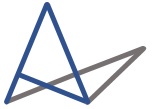Introduction:
Dreaming of working in the United States? The E3 visa could be your ticket to pursuing professional opportunities in the land of endless possibilities. Designed exclusively for citizens of Australia, the E3 visa offers a streamlined pathway to work legally in the United States. In this blog post, we will explore the key features of the E3 visa, the application process, and its benefits for Australian professionals looking to advance their careers in the USA.
1. Understanding the E3 Visa:The E3 visa was established in 2005 as a result of the United States-Australia Free Trade Agreement. It is a non-immigrant visa category reserved solely for Australian citizens seeking employment in a specialty occupation in the United States. The specialty occupation requirement means that the job should require a specialized body of knowledge and at least a bachelor’s degree or its equivalent.
2. Key Features and Benefits:
a) Job Opportunities: The E3 visa opens up a wide range of employment prospects in the United States. Australian citizens can secure jobs in various industries, including IT, engineering, finance, healthcare, architecture, and many others. This visa offers flexibility and allows for multiple employers during its validity period.
b) Spouse Work Authorization: The E3 visa stands out from other non-immigrant visas as it grants work authorization to the spouse of the primary visa holder. This feature enables dual-career couples to pursue their professional aspirations in the United States simultaneously.
c) Visa Duration and Renewal: The initial validity period of an E3 visa is up to two years, but it can be extended indefinitely in two-year increments. The E3 visa provides an excellent opportunity for Australian professionals to gain valuable work experience and potentially explore permanent residency options in the future.
3. Application Process:
a) Labor Condition Application (LCA): Before applying for the E3 visa, the employer must file a certified Labor Condition Application (LCA) with the U.S. Department of Labor. This process ensures that the employer will provide fair wages and working conditions that do not adversely affect U.S. workers.b) Petition Submission: Once the LCA is certified, the employer can submit a completed Form I-129, Petition for Nonimmigrant Worker, to the United States Citizenship and Immigration Services (USCIS). The petition must include supporting documents such as the certified LCA, a job offer letter, and proof of the applicant’s qualifications.
c) Visa Interview: After approval of the petition, the applicant must schedule a visa interview at the nearest U.S. embassy or consulate. During the interview, the applicant will be required to provide necessary documentation, including a valid passport, visa application forms, photographs, and supporting evidence of their qualifications.
4. Tips for a Successful Application:
a) Thoroughly Prepare Documentation: Compile all necessary documents meticulously, ensuring they are accurate, up-to-date, and well-organized. This includes educational degrees, professional certifications, employment letters, and other supporting evidence of your qualifications.
b) Show Strong Ties to Australia: Demonstrate that you have significant ties to Australia, such as family, property ownership, or long-term career prospects, to establish your intention to return after the visa expires. This will strengthen your case and alleviate concerns about potential immigration intent.
c) Seek Professional Guidance: Consider consulting with an immigration attorney or an experienced visa consultant to ensure you navigate the application process smoothly and maximize your chances of success.
Conclusion:
The E3 visa serves as a remarkable opportunity for Australian professionals to advance their careers in the United States. With its unique features, job flexibility, and extended duration, this visa category provides an excellent pathway to explore new horizons and gain invaluable international experience. By understanding the key aspects of the E3 visa and diligently preparing your application, you can embark on an exciting journey toward working in the USA. So, why not take the first step today and pursue your American dream through the E3 visa?For more information and resources on the E3 visa and the application process, visit the following websites:- United States Department of State: [https://travel.state.gov/content/travel/en/us-visas/employment/temporary-worker-visas.html](https://travel.state.gov/content/travel/en/us-visas/employment/temporary-worker-visas.html)- U.S. Citizenship and Immigration Services (USCIS): [https://www.uscis.gov/working-in-the-united-states/temporary-workers/e-3-certain-specialty-occupation-professionals-from-australia](https://www.uscis.gov/working-in-the-united-states/temporary-workers/e-3-certain-specialty-occupation-professionals-from-australia)- Australian Embassy, Washington DC: [https://usa.embassy.gov.au/](https://usa.embassy.gov.au/)- Fragomen: [https://www.fragomen.com/insights/alerts/e-3-visa-guidance-uscis-new-petition-filing-procedures](https://www.fragomen.com/insights/alerts/e-3-visa-guidance-uscis-new-petition-filing-procedures)Remember to always refer to official government sources and consult with professionals for the most up-to-date and accurate information.
Good luck on your E3 visa journey!


